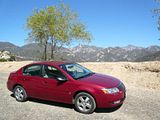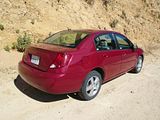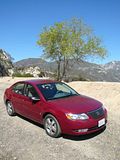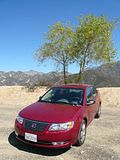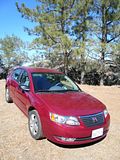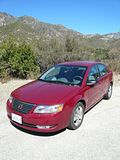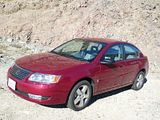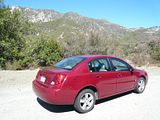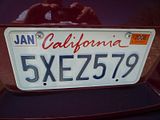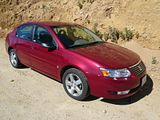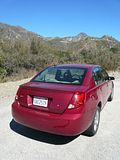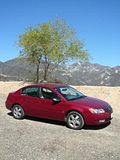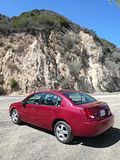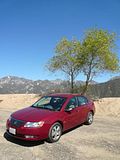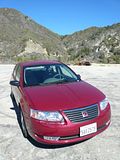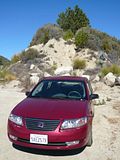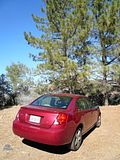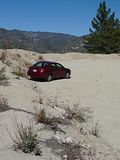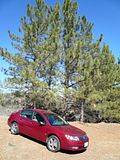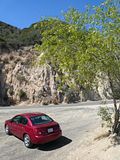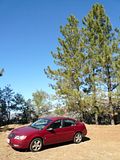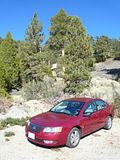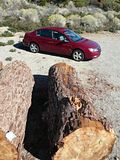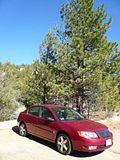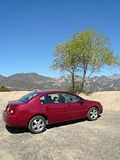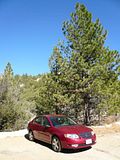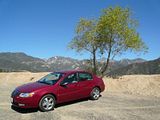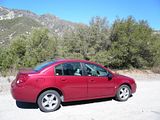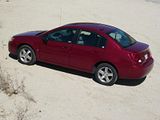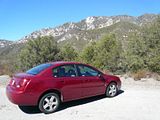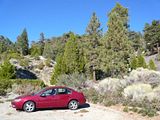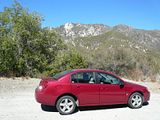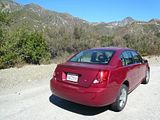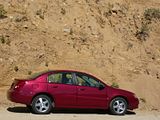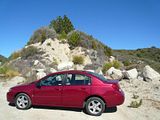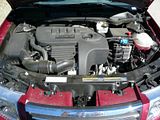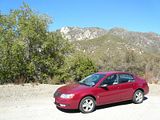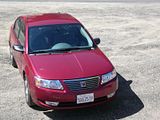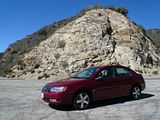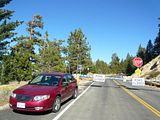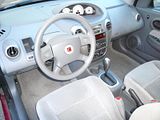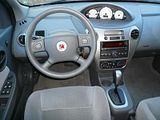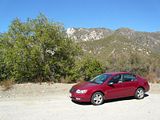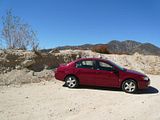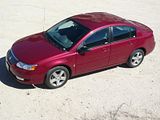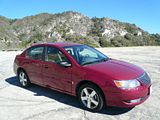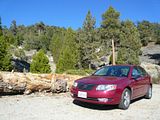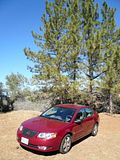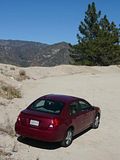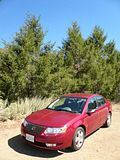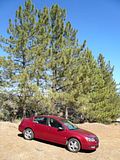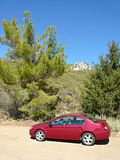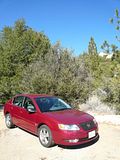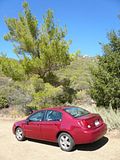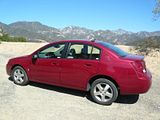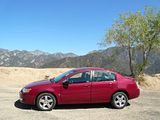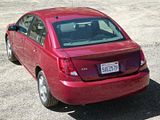As will be fairly evident from the number of reviews of cars driven in America, I make several trips a year there, on business, often combining more than one city in the same transatlantic crossing. This has enabled me to try quite a number of rental cars that you just would not see in Europe or the UK, indeed many of which will be relatively unfamiliar to a UK audience. As these trips are for work, then corporate travel policy applies, which sets the bar quite low in the car rental hierarchy, though we are allowed to fund any desired upgrade personally and of course quite often the rental car company, Hertz in my case, provides something a bit bigger or better than reserved anyway. I always try to get something that I’ve not driven before and with a vast fleet containing almost every model on sale in America, ignoring the high end and truly premium and prestige stuff that is, I’m not likely to run out of different cars to try. Having now got quite a good understanding of just what is in the fleet and also what is happening on the US market with new models and cars ending production, I have largely been sampling cars near the end of their production life, knowing that a sort of “now or never” applies. That philosophy is what lay behind the selection of this latest test car, a model which I had only once before even seen in the Hertz fleet, and only one example of which was in the vast LAX site when I had a quick wander around before going to the rental car counter.
So this is a Saturn Ion, not a car that will be well known to anyone in Europe. And although it is well known in the US, it is largely for the wrong reasons, Saturn launched this car, a mid-sized four door sedan, with the range also including a slightly quirky coupe, almost exactly five years ago, in October 2002, to replace the long-running S-Series, and the car was heavily criticised among other things for lacklustre performance, high noise levels, lifeless steering, unusual dashboard ergonomics and a particularly low-rent feeling of cheapness to the materials used, especially on the inside. Despite that, sales have been respectable and to be fair to its maker, Saturn have made improvements on an annual basis since launch to try to address the criticisms. The Saturn brand was created to provide a no-hassle approach to the buying and ownership aspects of a car, and although some of the original concept may have been diluted a bit, there is some brand loyalty that has built up over the years. The Ion needs more than that, though for success, as it is in one of the most competitive market segments of all, that of what are now called mid-sized sedans, although by American standards these are still on the small side compared to the bigger selling models a class up, which includes big sellers like the Toyota Corolla and Honda Civic, as well as the Nissan Sentra and Mazda 3, as well as Ford’s Focus and in-house rivals with Chevrolet and Pontiac badges on them. Whilst the Ion uses a fair amount of GM componentry under the skin, and indeed s based on the Delta platform used by the Chevy Cobalt and Pontiac G5 twins and the Chevrolet HHR, the bits you can see are quite unlike anything else that GM make, with distinctive styling, especially at the back and the thing you can’t know from a quick visual inspection, the fact that the body is made not from steel but from a polymer composite, so a sort of glass-reinforced plastic. Saturn cite the advantages of this being lighter weight and an element of resistance to minor bumps, though if these benefits were so overwhelming, one has to wonder why all cars have not gone down this route, but is true that the body panels won’t rust. I was intrigued to see how the Ion would fare in the week that I had it.
The standard engine for an Ion is GM’s Ecotec 2.2-litre, four-cylinder engine that produces 145 bhp and 150 lb/ft of torque, a 5 bhp increase for 2007 model year cars from previously. Opt for the Enhanced Performance package on the Ion 3 and you’ll get a 2.4-litre four-cylinder with 175 bhp and 164 lb/ft. In both cases, a five-speed manual transmission is standard and a four-speed automatic is optional. There was no obvious way of telling which was fitted to my car (it was an Ion 3) but rental cars don’t usually come with options packages on them, so I am guessing it was the smaller unit. I can certainly report that the car did have the optional auto box, like all US rental cars. 145 bhp ought to be enough to give a car of this size and weight quite peppy performance, but in this case, it does not really do so. To get decent acceleration out of the car requires you to work it hard and then it gets very noisy. The transmission will respond, but it needs a bit of a wake-up message from your right foot kick it into action. At a steady speed, on the freeway, noise levels are relatively low apart from some from the tyres on LA’s concrete roads, though there is no way you would call this a quiet car or even the quietest in class. Sadly, the same comments apply to the other driving dynamics. The electrically-assisted power steering is relatively light but also largely devoid of much feel, though apparently it is a lot better than it was in the early cars. The Ion holds the road well enough but this is not the sort of machine that you would get in to take for a spin, just for fun. Equally, it should prove safe for those just want to get from A to B, with no real surprises. The brakes worked well and there is a pull-up handbrake between the seats though this being an automatic, I did not bother with it. Glass area is good, so there is a decent view out but the usual proviso applies about taking care with the blind spot alongside when you want to pull out to overtake.
When you open the door and look inside the Ion, you will certainly find something quite unlike any of its rivals. Rather than a conventional instrument cluster directly in front of the driver, on the Ion it is positioned in a pod on the centre of the dash, angled towards the driver, with nothing in the place the other side of the steering wheel. Of course there are plenty of other cars that have done this, often, as this makes it much easier to offer left and right hand drive versions without having to tool up for two different dashboard units, but that was unlikely to be the rationale here. There are three dials, with a larger diameter central speedometer flanked by one containing fuel gauge and water temperature on the left and rev counter on the right. Despite their relative distance from the driver they are easy enough to read though you do need to train your eyes to continue to look right. The other switchgear is rather more conventional, with evident use of the GM parts bin for things like the pair of column stalks and the audio unit which is in the centre of the dash, low down. It has AM and FM radio, a CD slot and there is an AUX port. This trim version goes air conditioning with three turn knobs used to select temperature and direction of air flow as well as fan speed. Needless to say, the steering wheel is a plastic moulding and is quite chunky, but not unduly unpleasant to hold and use. Overall this is a simple layout barring that unusual siting of the dials, but it is all made of rather hard and brittle feeling plastic which does nothing to suggest anything other cheap. At least it all fitted together well and there were no squeaks or rattles.
The impression of quality, or rather the relative lack thereof comes when you look at the seat material, which is a rather cheap-feeling sort of cloth that I once memorably saw someone describe as like mouse fur. There is actually plenty of space for front seat occupants, and a good range of (manual) adjustment of the seats fore and aft and backrest angle and on this version there is a height adjuster for the driver’s seat. The steering wheel goes up and down as well, so I was able to get the driving position I wanted. I was not totally comfortable on the seat, though, as it needed more support under the thighs. Those in the back may not feel quite so fortunate. With the front seat set well forward, as it needs to be to suit my requirements and short legs, there is ample legroom but if the seat is set further back, then legroom is not particularly generous and indeed may prove a little tight for some people. This is not that large a car, so getting three adults in the back seat might also be a bit of a squeeze. In contrast, the boot is generous, one of the largest in the class. It is a nice regular shape, long from front to back. More space can be created by dropping the rear seat backrests down. Inside the cabin there is a reasonable sized glovebox, pockets on the doors and a small recess on the dash to the right of the wheel. Those in the back get door bins and there is a map pocket on the back of the front passenger seat.
The 2007 Saturn Ion lineup includes two body styles and three trim levels: Ion 2, Ion 3 and Red Line. (There is no “Ion 1.”) In addition to the standard small sedan, there is the “quad coupe” body style. The latter gets its name from its coupe body, which features a pair of reverse-opening access doors that make loading passengers or cargo into the backseat a lot easier. The Ion 2 really is what the Americans call a stripper, save for power locks, OnStar and a CD player, and it looks it with 14″ wheels and wheel covers. The Preferred Package for the Ion 2 adds power windows and mirrors, cruise control, a driver-seat height adjuster and keyless entry. The Ion 3 features all these items plus 16-inch alloy wheels, air-conditioning and an anti-theft system. Adding a bit of sporty flavour to the Ion 3 is the available Enhanced Performance Package that includes a more powerful engine, sport-tuned suspension, antilock brakes and traction control. Available as a quad coupe only, the high-performance Ion Red Line features 17-inch alloy wheels with 215/45ZR17 performance tyres, a lowered sport-tuned suspension, leather sport seats and much of the Ion 3’s equipment. Red Line-specific options include a choice of rear spoilers and the Red Line Competition Package that adds a limited-slip front differential, painted alloy wheels, a boost gauge and a programmable “ladder” tach that lights up when certain rpm levels are reached. The test car was an Ion 3.
So what did I think of the Ion, after driving it around Los Angeles for a few days of commuting between the hotel and the office and a weekend when I headed down to San Diego and up into the canyons north of LA? Well, it’s certainly nothing like as bad as the reputation might have led you to believe. Is it a good car? No, not really. There are plenty of alternatives that are objectively better and there was nothing that the Ion did which its rivals can’t also do. So is it a car to avoid? Not necessarily. As practical value transportation, it has its place, and I can see that many people, especially those who like to think that they are buying American, will relish the Saturn ownership experience and be quite happy with their Ion. If you are at the rental car counter and you are offered one, I think I might ask if they have anything else, but if the answer is “no”, it is no longer the end of the world. But that is quite unlikely, as there are few on fleet as production ceased earlier in the year, its place being taken by an American-ised version of the familiar Opel/Vauxhall Astra. It will be interesting to see how that car appeals to American consumers. Perhaps Hertz will continue with their toe in the Saturn water and get some on fleet in 2008.


